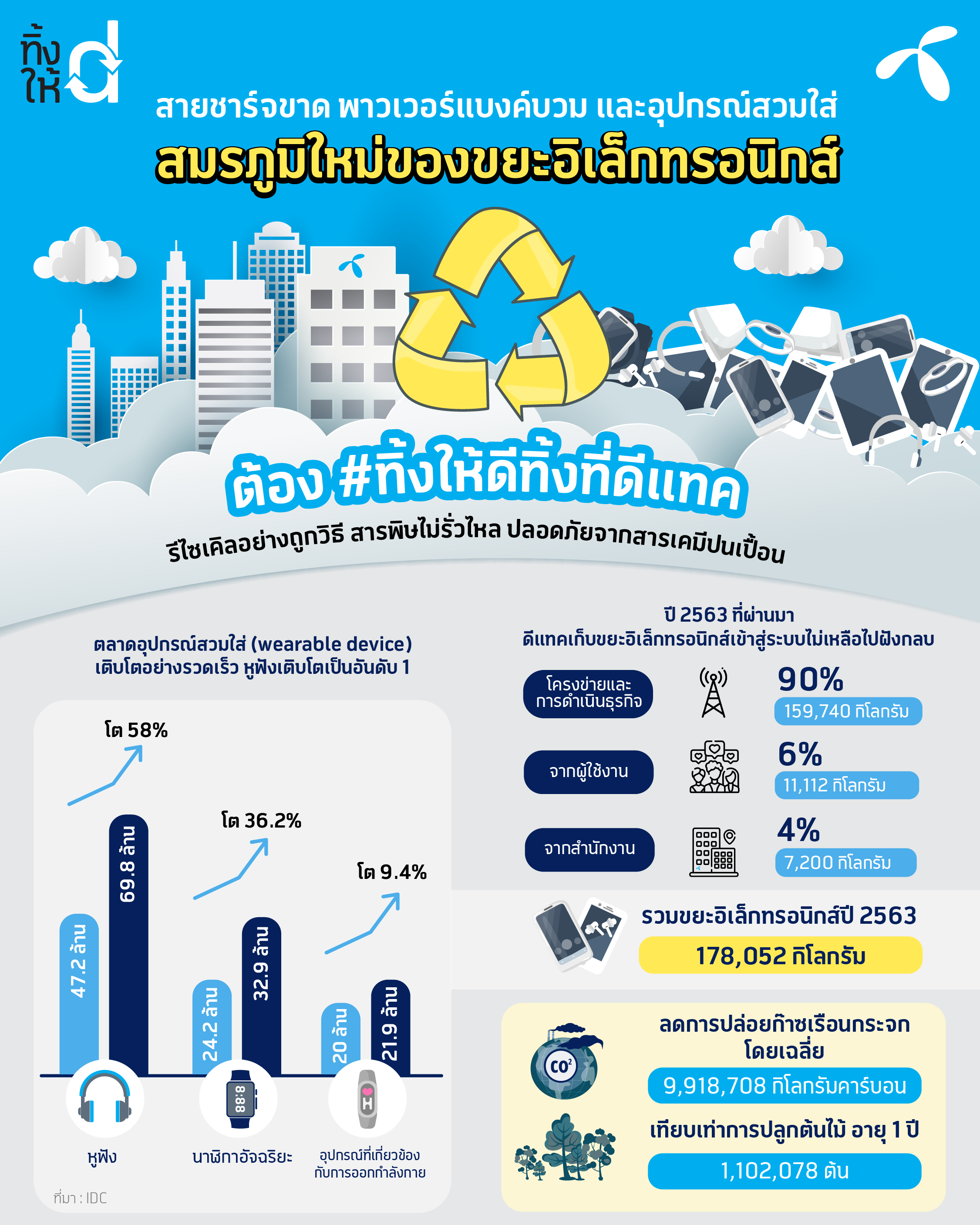12 March 2021 – dtac is calling on all households to take a close look at old power banks, charging cables and even earphones. Such items carry risks of explosions, toxic emissions, and electrical discharges. dtac is inviting the public to properly dispose of aged and damaged electronic waste at special bins located at its 51 dtac Halls across the country.
Batteries – An Explosive Issue
The power bank market in Thailand is worth 1 billion Baht with a continuous trend for growth. A power bank has an average life span of 4 years, or 500-800 charges1, before losing capacity. The most popular type of rechargeable battery is lithium-ion thanks to its low weight, high-capacity and long lifespan. But they can be hazardous when not disposed of properly or fully discharged2. A survey by dtac found that 85% of users keep their power banks at home even when they are no longer fully functional, with an average number of unused power banks of 2-3 per user.

Wearables – the New Frontier in Electronic Wastes
Wearables like earphones, earbuds and smart watches grew by 52 percent reaching 125 million sets shipped around the world in 2020. Of those, earphones have the highest market share at 56 percent of all wearables and a growth rate of 58%. Next, smart watches constitute 32 percent of market share while fitness monitoring wearables account for 9 percent3. Canalys, a global market research firm, forecasted that by 2023, small smart IT devices would amount to 3 trillion pieces around the world—not counting mobile phones4. They also predicted that earphones would amount to as much as 726 billion pieces globally.
How to determine when to dispose of charging cables, power banks and earphones
dtac Think Hai D invite users to check the conditions of their electronic accessories by looking for signs of:
- Old and swollen batteries and power banks: by placing an old battery or power bank on a flat surface like a table and try to spin it with you hand. If it spins freely, it is a sign that it may have swollen. If the battery is of lithium-ion type and old, it carries a risk of explosion.
- Broken charging cable: if the inner wires of charging cable can been seen through a crack or if its joint is bent out of shape or visibly broken. This can damage mobile devices it connects to and cause short circuits.
- Broken earphones: if the cables of earphones show signs of tear or shorting out, dispose of them properly as earphones are also a source of e-waste.
These small IT accessories contain precious metals such as lithium, cobalt and copper etc. When they extracted using proper recycling processes, they can find new life by reentering the economy.
dtac Think Hai D is an initiative launched in 2012 to manage electronic wastes such as mobile phones and other communication devices with the collected e-wastes properly disposed of and go through proper recycling processes. A total of 1,810,330 pieces of e-wastes have been collected and processed by the dtac Think Hai D program, contributing to carbon reduction of 32,248,751 kilograms or equivalent to planting 3,583,195 trees. Each piece of e-waste can be recycled as much as 96-98 percent and negating the need for further landfills.
Under the framework for environmental and climate change management, dtac has, in 2020, collected and recycled electronic wastes from general users accounting for 6 percent of the total e-waste the company forwarded to the recycling process. The electronic waste from dtac House (our headquarters) accounts for 4 percent of all e-waste processed, while 90% come from our network and transmission operations.

Sources:
[1] Powerbank expert, 2020.
[2] Research on the state of lithium-ion battery recycling technology development in Thailand by Suranaree University of Technology, 2019.
[3] IDC, 2020.
[4] Canalys, 2020.

